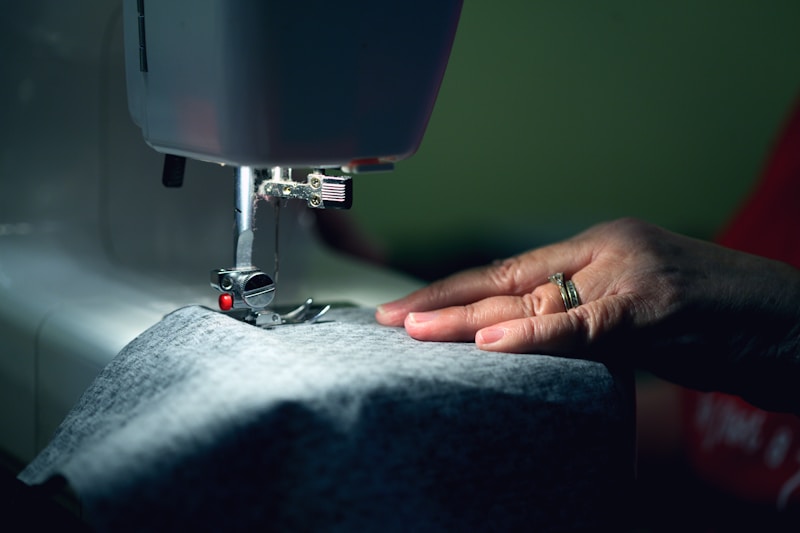Mastering Designer Fabric Sourcing: A Comprehensive Guide
In the world of fashion and interior design, designer fabric sourcing is an essential skill that can elevate any project. Whether you’re a professional designer, a DIY enthusiast, or someone simply looking to enhance their home décor, understanding how to source quality fabrics can make all the difference. In this article, we will explore the key aspects of designer fabric sourcing, from identifying the right suppliers to understanding fabric types, costs, and trends.
Understanding Designer Fabric Sourcing
Designer fabric sourcing involves finding unique, high-quality materials that designers use to create garments and furnishings. It can include anything from luxury textiles like silk and velvet to sustainable materials that appeal to eco-conscious consumers. With the growth of online marketplaces and global suppliers, sourcing has become easier yet more competitive. This article explores various strategies to successfully source designer fabrics.
The Importance of Quality Fabrics
When it comes to fashion and design, the quality of the fabric can significantly impact the final product. High-quality materials not only enhance the aesthetic appeal but also affect the garment's longevity and comfort. Here are some reasons why sourcing quality fabrics is crucial:
- Durability: Quality fabrics withstand wear and tear, ensuring that designs remain intact over time.
- Aesthetic Appeal: Good fabrics enhance colors, patterns, and textures, making designs more visually appealing.
- Comfort: Fabrics that feel good on the skin can enhance the overall experience for the wearer.
Steps in Designer Fabric Sourcing
1. Identify Your Project Needs
Before you begin sourcing, clarify your project needs. Identify the style, colors, and types of fabrics you require. Knowing this will help narrow down your search and save time.
2. Research Suppliers
With countless suppliers available online and offline, conducting thorough research is essential. Look for suppliers known for their quality and unique designs. Consider the following:
- Read reviews and testimonials from previous customers.
- Attend trade shows and fabric expos to connect with potential suppliers.
- Explore social media platforms for inspiration and supplier recommendations.
3. Evaluate Samples
Once you have identified a few suppliers, request fabric samples. This allows you to assess the quality, feel, and drape of the fabric before making a bulk purchase. Make sure to evaluate the samples in different lighting for a more accurate perception of the colors.
4. Understand Fabric Types and Prices
Different fabrics vary in terms of price, durability, and purpose. Here’s a brief overview of common fabric types:
| Fabric Type | Description | Average Price (per yard) |
| Cotton | Soft, breathable, and versatile. | $10-$20 |
| Silk | Luxurious and smooth, ideal for high-end garments. | $30-$100 |
| Wool | Warm and durable, often used for winter clothing. | $20-$50 |
| Linen | Lightweight and breathable, perfect for summer wear. | $15-$30 |
Understanding these fabrics’ characteristics helps you make informed decisions based on your design vision and budget.
5. Place Your Order
After evaluating samples and choosing your fabrics, it’s time to place your order. Consider these strategies:
- Negotiate prices and terms with suppliers.
- Inquire about minimum order quantities to avoid excess inventory.
- Request information about shipping times and return policies.
Trends in Designer Fabric Sourcing
Fashion and design are constantly evolving; staying informed about current trends can help you source more effectively. Some notable trends include:
- Sustainability: Eco-friendly materials dominate the market, with organic cotton, recycled polyester, and innovative fabric blends gaining popularity.
- Digital Fabrics: Custom digital printing allows for unique patterns and designs tailored to specific projects.
- Textured Fabrics: Textures like 3D embellishments and woven designs are increasingly in demand for both fashion and home décor.

Challenges in Designer Fabric Sourcing
While sourcing designer fabrics can be rewarding, it also comes with challenges. Here are common issues faced by designers:
- Cost Variability: Prices can fluctuate based on market demand and material availability, making budgeting challenging.
- Supplier Reliability: Finding dependable suppliers is crucial, but not all are consistent in quality or delivery.
- Keeping Up with Trends: The fast pace of fashion requires constant research to keep up with emerging styles and available materials.
Summary and Recommendations
In conclusion, mastering designer fabric sourcing is a vital skill for any designer or DIY enthusiast. By understanding project needs, researching suppliers, evaluating fabric quality, and staying updated on market trends, you can significantly enhance your sourcing success. Remember to also consider sustainability and innovative fabric options for modern designs. As you embark on your fabric sourcing journey, keep these key takeaways in mind:
- Quality trumps quantity—always choose quality fabrics over a larger quantity of lesser quality.
- Build relationships with suppliers to ensure better prices and reliable service.
- Stay flexible and adaptable to navigate the ever-changing fabric market.
Happy sourcing!